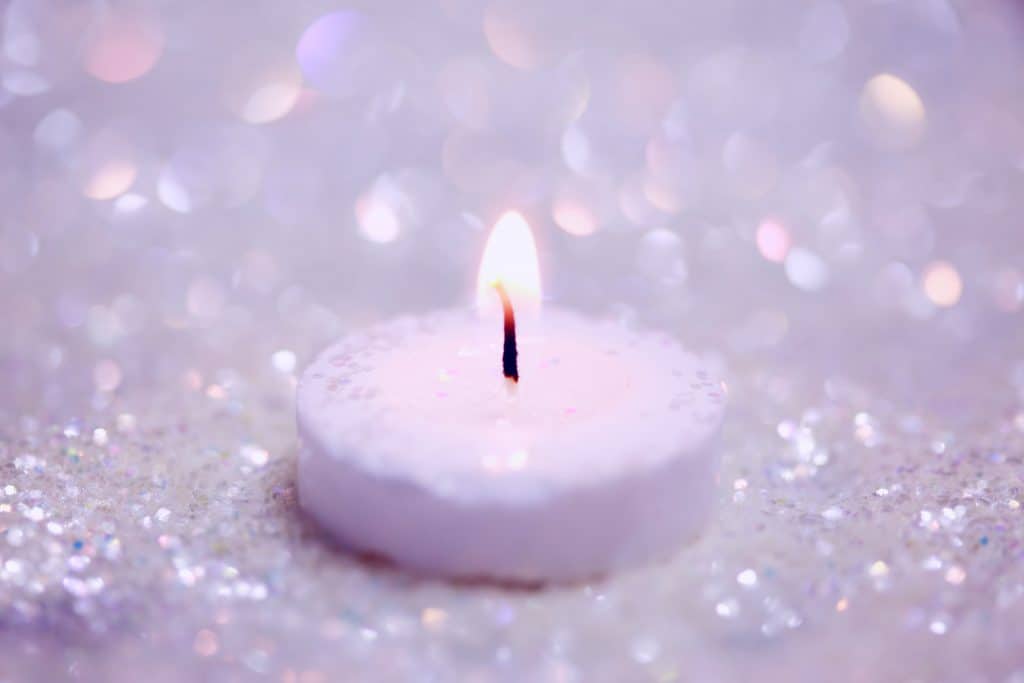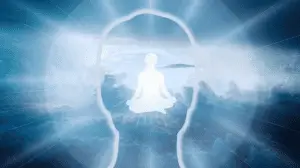Last Updated on July 8, 2021
Near-death experiences are a frequent yet highly misunderstood phenomenon.
Imagine this: you were just going about your day like any other. Then suddenly, an excruciatingly tight sensation rushes to your chest area, instinctively leading you to clutch it in agony. Unlike previous experiences, it doesn’t stop—the throbbing pain persists for seconds that feel eternal, up until your consciousness leaves you.
Unbeknownst to you, your family rushes you to your doctor, and the diagnosis was made clear: a heart attack. Hope for recovery looks bleak as your heart flatlines. You are clinically moribund and all signs are pointing to death. Or so you’d imagine.
For an astonishingly large amount of people, their consciousness doesn’t fade to black completely. They retain a tiny semblance of awareness, but not of the kind that’s human and complete. Instead, it’s an out-of-body experience, a near-death experience that’s spiritual, fleeting, calming, and ultimately life-changing.
Let’s look through the stages of an NDE and some popular near-death experience cases.
What are NDEs? Understanding This Spiritual Occurrence
NDEs are profound spiritual occurrences where one teethers close to death and, through ambiguous reasons, retains memories of the experience. Typically, NDErs feel more spiritually awakened after the events. This can happen across all cultures, religions, and ages- from the elderly to children.
Some studies say that the patient’s brain undergoes an approaching psychological reaction towards death. But the research still can’t explain how these people suffering from cardiac arrest were able to develop complex scenarios. Even strict regimes like the USSR, who abolished creed in all forms, had case reports of NDEs.
Raymond Moody tried to make sense of this when authoring a book named Life After Life. Here, he talks about the reality of these shared events.
He interviewed 150 people to understand how they’ve seen the world so differently from everything we know in our lives. NDErs are usually patients who’ve reached a life-threatening point close to their brain dying but managed to recover.
The NDEr’s body, man or woman, typically gets resuscitated with clinicians who intervene. But it begs the question, what are the narratives of the thousands of accounts with this strange yet shared perception?
How To Tell You’re Approaching a Near Death Experience?

Kenneth Ring posited that an NDE falls on a five-stage continuum. These subdivisions consist of the following:
- Peace
- Body Separation
- Entering Darkness
- Seeing The Light
- Emerging Through a New Realm of Existence in the Light
What Happens After a Near Death Experience

As for the after-effects, one may experience a severe shift in their personality. Some notable characteristics include shared commonalities among survivors. These include a greater appreciation for life, less materialism, more spirituality, more compassion for others, and better intuition.
Types of Near Death Experiences
There are two types of NDEs: Heavenly and Hellish Near Death Experiences. Heavenly experiences are the more common episodes patients face.
Surprisingly, the NDEs experienced by people aren’t based on how good they’ve been here on earth. Saint-like people have reported experiencing Hellish NDEs, while criminals and miscreants have faced Heavenly NDEs.
Heavenly Near-Death Experiences
A comforting and mystically familiar presence starts to envelop you: it’s of tunnels and angelic light and phantasms of people past. The only way to experience this visage without the permanence of lifelessness in the world is through NDEs. Particularly, the Heavenly NDEs.
Most people who’ve had an NDE fall under this category. Reports of people with these types of experiences include the presence and existence of an all-loving and generous diety. According to Jeffrey Long of the Mary Bird Perkins Cancer Center, people who had NDEs lose their fear of death.
They may even classify the near-death experiences as a dominating part of their identity and lives.
Hellish Near-Death Experiences
Two researchers found fascinating reports regarding the Hellish Near Death Experience phenomenon. This includes Nancy Evans Bush, MA, a clinical researcher of the International Association for Near-Death Studies, in Charlottesville. The second researcher includes Bruce Greyson, MD, a professor at the University of Virginia School of Medicine. He also authored the book Handbook of Near-Death Experiences, Thirty Years of Investigation.
Their reports show that some people have a 20% chance of experiencing a dark NDE with a hellish theme. At the start of their spiritual consciousness, they experience what is the antipode of the heavenly near-death experience. It’s a malevolent, dark, and distressing human experience for the patient. So much so that, once they get resuscitated, they develop new adaptive patterns to process this.
These patterns are:
- He or she changes; becomes ultra-religious to compensate for their sinful acts on Earth.
- Tell and convince themselves that the NDE is not real.
- Engage in long-term psychotherapy to process the mind and brain function.
9 Stages of a Near-Death Experiences
People who’ve experienced a near-death experience, like heart failure or cardiac arrest survivors, follow a similar pattern throughout their ordeal. While not all patients recount each part in vivid detail, there may be a chance that they’d report the following:
- After some time, many report a sweeping relief from the pain in their bodies
- Some report auditory experiences of pleasant and soothing music
- An out-of-body experience with a full view of the physicians’ resuscitation efforts in the operating room from the ceiling
- A strange feeling of tunnel vision in a light tunnel within the darkness of space of the universe
- Their spirit arrives at a brilliant and heavenly place
- Some meet the deceased the moment they enter. (An old loved one, friend, father, children, or familiar family members and individuals)
- State of seeing someone resembling a deity or God, emitting love and light
- Seeing God, the person has a life review of the many ways they’ve been bad or good in their life
- The response of the diety or some other person in the afterlife is that it’s not yet their time. They get a choice to return to loved ones with life intact.
Pim van Lommel, MD asked NDE survivors the question if there was anything unusual that happened before the resuscitation. It was reported that 18% of participants reported feeling an NDE after getting resuscitated. However, only 2% self-reported an NDE.
What is an Out of Body Experience?
An out-of-body experience (OBE), according to MD and radiation oncologist Kenneth Ring, is common in NDEs. But it happens in other settings too. Fainting, alcohol or drug use, and deep sleep are some of the settings where OBE can arise.
Powerful Near-Death Experiences Stories

While people may fall under the notion that NDEs are more prevalent in spiritually inclined people, many others have stories. Including physicians and non-believers.
The Blind Can See
In a study with 14 blind from birth participants, nine of them reported that they experienced a highly visual NDE. This is consistent among non-blind experiencers who claim that their vision falls more in line with the supernatural.
One account mentioned: “For the first time I was able to see leaves on trees, bird’s feathers, bird’s eyes, details on telephone poles, and what was in people’s back yards. I was seeing far better than 20/20 vision.”
Eben Alexander III
This Harvard neurosurgeon wrote Proof of Heaven: A Neurosurgeon’s Journey into the Afterlife to document his battle with meningitis. He claimed to have experience changed his perceptions of life and the afterlife.
He made a second book entitled The Map of Heaven: How Science, Religion, and Ordinary People Are Proving the Afterlife. There, he posited that our consciousness is independent of the brain, cross-referencing spiritual experiences across religions.
Jean Hausheer
Jean Hausheer had an MD and was a professor of ophthalmology at the University of Oklahoma. Her NDE occurred while she was a medical student at Kansas City at the University of Missouri. She didn’t disclose the fact that she was an NDE experiencer at first, but after prodding from colleagues, she obliged.
Now, she holds lectures nationwide regarding her experience, particularly the interpretation of the religious content of her experience in churches.
Colton Burpo
Colton, a four-year-old boy, is in the emergency hospital room where doctors performed surgery on his account. Suddenly, he slips into consciousness and enters a state akin to death. He enters heaven where he meets his miscarried sister and his great grandfather, retelling details of each. He also met God.
Colton’s story became a book and movie entitled Heaven Is for Real, available in multiple languages. This NDE experience gives rise to fascinating questions regarding the experiences NDErs face. If Colton has never met his great grandfather before, how was he able to provide an explanation about him?
Conclusion
Near death experiences traverse the overlapping fields of spirituality and science. While the compatibility of the two can be deemed questionable, one thing’s for certain. Death is something that all of us will eventually face sooner or later.
It may be worthwhile learning from the experiencers and see how their NDE has changed them. Their personality shift and the new direction of their lives—all these positive developments have brought new hope and optimism to these people.



